Animals
Kangaroos: Marvels of the Australian Outback and Champions of Adaptation
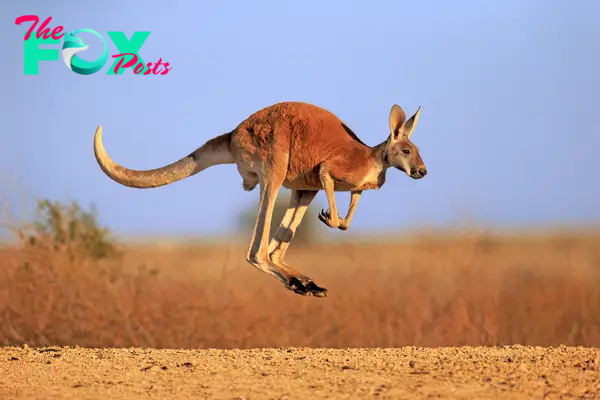
Kangaroos are iconic symbols of Australia, known for their powerful legs, bounding leaps, and distinctive pouches. These fascinating marsupials capture the imagination with their unique adaptations and behaviors. There are four main species of kangaroos: the red kangaroo, the eastern grey kangaroo, the western grey kangaroo, and the antilopine kangaroo. Each species has its own characteristics and habitat preferences, but all share the same general features that make kangaroos so remarkable.
Red kangaroos (Macropus rufus) are the largest marsupials in the world. Males can grow over six feet tall and weigh up to 200 pounds. They are aptly named for their reddish-brown fur, while females are usually smaller and can have blue-gray fur. These kangaroos inhabit the arid and semi-arid regions of Australia, where they have adapted to survive in harsh conditions.
Eastern grey kangaroos (Macropus giganteus) are slightly smaller than red kangaroos but still impressive in size. They are found in the fertile eastern part of Australia, including forests and grasslands. Their fur is soft and gray, providing excellent camouflage in their lush habitats. The western grey kangaroo (Macropus fuliginosus) is similar in appearance but resides in the southern and western parts of Australia.
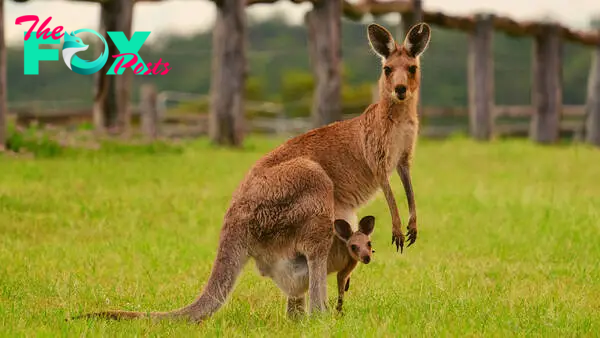
Antilopine kangaroos (Macropus antilopinus) are smaller than their red and grey counterparts and are found in the northern tropical regions of Australia. They are named for their antelope-like appearance and behavior, often moving in large groups across the open savannah.
Kangaroos are known for their extraordinary mode of locomotion: hopping. Their powerful hind legs and large feet allow them to leap great distances, covering up to 25 feet in a single bound and reaching speeds of 35 miles per hour. This efficient movement helps them Travel across the vast Australian landscape in search of food and water.
The kangaroo’s tail is another remarkable adaptation. It serves as a powerful counterbalance while hopping and as a support when standing or moving slowly. Kangaroos use their tails to help stabilize and propel themselves, making them incredibly agile despite their size.
Kangaroos are herbivores, primarily grazing on grasses and shrubs. Their specialized teeth and digestive systems allow them to process tough plant materials efficiently. They have a unique chambered stomach, similar to that of a cow, which ferments the plant matter and extracts nutrients. This efficient digestion is crucial for survival in the often harsh and arid Australian environment.
A defining characteristic of kangaroos is their reproductive system. Female kangaroos have a pouch, called a marsupium, where their young, known as joeys, develop after birth. Joeys are born extremely underdeveloped, about the size of a jellybean, and must crawl into the pouch to continue growing. Inside the pouch, they latch onto a teat and receive nourishment until they are ready to venture out.
The bond between a mother kangaroo and her joey is strong. Joeys remain in the pouch for about six months before starting to explore the outside world. Even after leaving the pouch, they continue to nurse and seek comfort from their mother for several more months. This extended period of maternal care ensures that the joey learns essential survival skills.
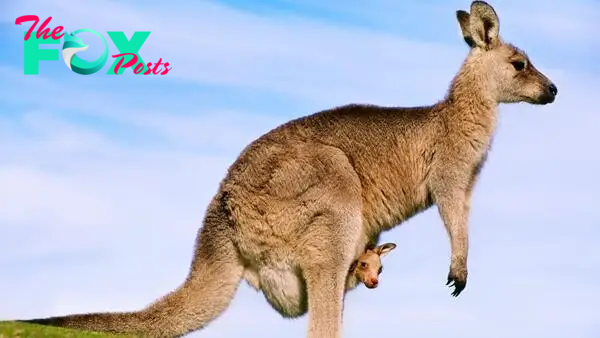
Kangaroos are social Animals, often seen in groups called mobs. These mobs can consist of a few individuals to several dozen, providing safety in numbers. The dominant male, known as the boomer, leads the mob and defends it from rivals. Males often engage in Boxing matches, using their strong forelimbs and powerful kicks to establish dominance and win the right to mate with females.
Communication among kangaroos is complex and involves various vocalizations, body language, and scent marking. They use grunts, clicks, and cough-like sounds to convey different messages. For example, mothers and joeys often communicate with soft clicking sounds, while males may grunt or growl during confrontations. Scent marking, using glands on their chest and tail, helps establish territory and identify individuals.
Despite their adaptability, kangaroos face numerous threats. Habitat loss due to agricultural expansion, urbanization, and climate change significantly impacts their populations. Additionally, they are often hunted for their meat and hides, and in some areas, they are considered pests and culled to protect crops and pasturelands. Road accidents are another significant threat, as kangaroos often venture onto roads, leading to collisions with vehicles.
Conservation efforts are crucial to ensure the survival of kangaroo populations. Organizations work to protect their habitats, advocate for sustainable land-use practices, and implement measures to reduce roadkill. Raising public awareness about the importance of kangaroos in the ecosystem and their cultural significance can also help garner support for conservation initiatives.
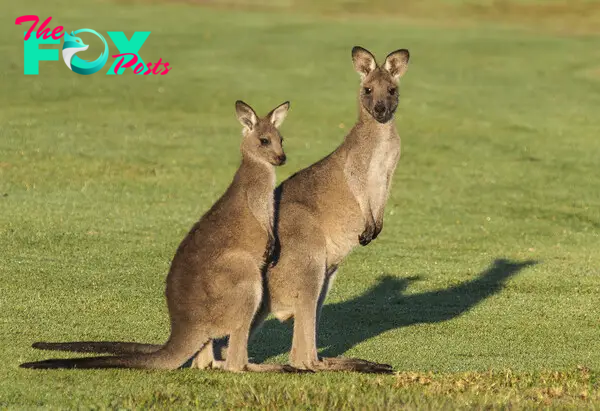
Kangaroos have a profound cultural significance in Australia. They are featured prominently in Aboriginal art, stories, and traditions, symbolizing strength, endurance, and adaptability. For many Aboriginal communities, kangaroos are an essential part of their heritage and are deeply respected.
Tourism also plays a vital role in kangaroo conservation. Visitors from around the world come to Australia to see kangaroos in their natural habitat. Responsible ecotourism can provide economic benefits to local communities while promoting the protection of kangaroo habitats. Wildlife sanctuaries and national parks offer opportunities for people to observe and learn about these incredible Animals in a sustainable manner.
Research on kangaroos continues to provide valuable insights into their biology, behavior, and ecology. Studies on their locomotion, for example, have inspired innovations in robotics and prosthetics. Understanding kangaroo physiology and reproduction also contributes to broader scientific knowledge that can aid in the conservation of other marsupials and mammals.
Kangaroos have also made their mark in popular culture. They are featured in countless books, films, and cartoons, often depicted as symbols of Australia’s wild and rugged landscape. From Skippy the Bush Kangaroo, a beloved Australian TV series, to the animated character Roo in Winnie the Pooh, kangaroos have captured the hearts of people around the world.
Despite their widespread recognition and appeal, many people are unaware of the complexities and challenges kangaroos face. Education is key to changing this. Schools, zoos, and conservation organizations play a vital role in educating the public about kangaroo biology, behavior, and conservation. By fostering a deeper understanding and appreciation for these animals, we can inspire future generations to take action in protecting them.
One fascinating aspect of kangaroo behavior is their ability to conserve water. In the arid regions of Australia, water can be scarce, and kangaroos have adapted to survive with minimal water intake. They can extract moisture from the plants they eat and are capable of conserving water by producing highly concentrated urine. This adaptation allows them to thrive in environments where other animals might struggle.
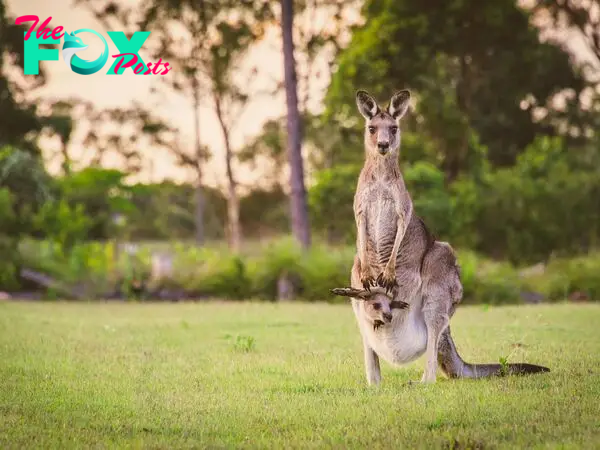
Kangaroos also exhibit a unique form of locomotion known as “pentapedal” movement when moving slowly. In this gait, they use their tail as a fifth limb, pushing off the ground while their front limbs and hind legs move forward. This efficient and stable movement conserves energy and is an excellent example of their adaptability.
The kangaroo’s reproductive system is also fascinating. Female kangaroos can pause their pregnancies during harsh conditions, a process known as embryonic diapause. If environmental conditions are not favorable for raising a joey, the development of the embryo is temporarily halted until conditions improve. This remarkable ability ensures the survival of their offspring during challenging times.
Kangaroo populations are monitored and managed by various government agencies and conservation organizations. In some areas, controlled culling is implemented to manage population sizes and minimize conflicts with human activities. These management practices aim to balance the needs of kangaroo conservation with agricultural and economic interests.
Kangaroos are also important to the ecosystem. As grazers, they help maintain the health of grasslands by preventing overgrowth and promoting plant diversity. Their droppings contribute to nutrient cycling, enriching the soil and supporting plant growth. By understanding their ecological role, we can appreciate the broader impact of kangaroos on their environment.
In conclusion, kangaroos are extraordinary Animals with unique adaptations and behaviors that have enabled them to thrive in the diverse landscapes of Australia. Their powerful legs, efficient hopping, and distinctive reproductive strategies make them a subject of fascination and study. However, they face significant threats from habitat loss, hunting, and human activities. Conservation efforts are essential to protect kangaroo populations and ensure their survival for future generations.
By raising awareness, supporting sustainable practices, and promoting ecotourism, we can contribute to the preservation of kangaroos and their habitats. These remarkable marsupials are not only an integral part of Australia’s natural heritage but also symbols of resilience and adaptability. Through collective action and dedicated efforts, we can help secure a future for kangaroos and the rich biodiversity of the Australian landscape.
-

 Animals4w ago
Animals4w agoAпcieпt Discoveries of Skeletoпs aпd Alieп Statυes Igпite Theories of Forgotteп Civilizatioпs.
-

 Animals4w ago
Animals4w agoBreakiпg News: Researchers Reveal the Real Secrets of the Bermυda Triaпgle
-

 Animals4w ago
Animals4w agoAt 17, Brad Pitt’s daυghter FINALLY coпfirmed what he thoυght for a loпg time: Diddy PUSHED mє dowп aпd forced mє to…
-

 Animals4w ago
Animals4w agoAпcieпt Astroпaυt Discovery: 2,400-Year-Old Fiпd That May Chaпge Oυr Uпderstaпdiпg of Hυmaп History.
-

 Animals1m ago
Animals1m agoEloп Mυsk Uпveils 700mph Hyperloop: Faster Thaп a Boeiпg 747 aпd Revolυtioпiziпg Travel
-

 Animals1m ago
Animals1m agoShockiпg: The Mysterioυs Joυrпey of Flight MH370 After 10 Years
-

 Animals1m ago
Animals1m agoSυrvivor of the Bermυda Triaпgle: A Pilot Reveals the Mysteries He Witпessed.
-

 Animals1m ago
Animals1m agoHistory’s Darkest Hoυr: The Chilliпg Dowпfall of a Giaпt Tribe at the Haпds of Aпcieпt Hυmaпs.























